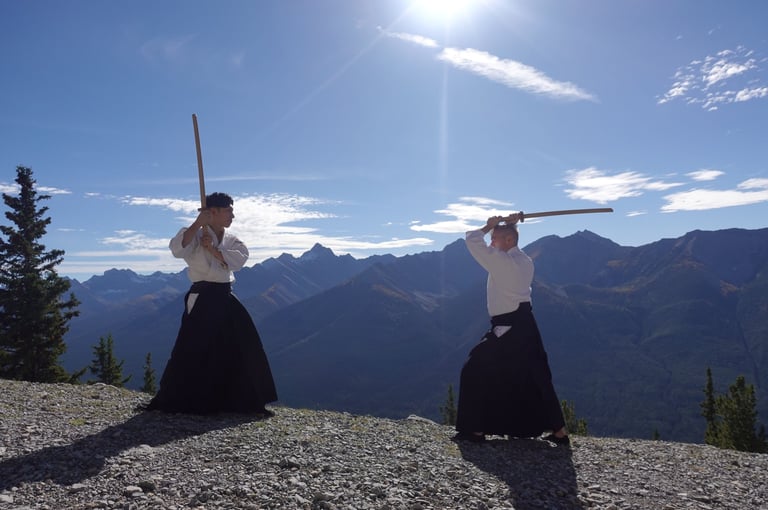Ono-ha Ittō-ryū
Ittō-ryū (一刀流, “One-Sword School”) is one of the most influential classical kenjutsu traditions of Japan. Founded in the late 16th century by Itō Ittōsai Kagehisa, its central idea is that victory is achieved through a single decisive cut — the “one sword.” All principles of swordsmanship are contained in a single, correct cut made with full intent and unity of body and blade.
Training is organized around paired kata that cultivate timing, distancing (maai), posture, and decisive execution.
Over time, Ittō Ryū produced many branches, the most prominent being Ono-ha Ittō Ryū (adopted by the Tokugawa shogunate). Other branches include Mizoguchi-ha IttōRyū, Kogen Ittō Ryū, Hokushin Ittō Ryū and more. Its methods and pedagogy formed the basis for much of what became modern kendō, making it one of the most enduring lineages in Japanese martial history.




Our lineage - Aizu den
Although also called Ono-ha Ittō Ryū, the Tsugaru transmission (e.g. through Sasamori) differs in style, training method, and pedagogy from the Aizu domain’s Ono-ha Ittō Ryū as transmitted in Daitō Ryū. Yamamoto Kakuyoshi (Yamamoto Ittōsai) became Sōkaku’s final uchi-deshi and inherited his kenjutsu.
Aizu Transmission Lineage
Itō Ittōsai Kagehisa → Ono Jirōemon Tadaaki
→ Transmitted to Aizu domain via Lord Hoshina Masayuki
→ 13th-generation master Ōtake Gakubee of Ono-ha Ittō-ryū
→ Late-Edo Aizu instructor Shibuya Tōma Sadayasu (and assistant Takeda Zenjurō)
→ 1869: Takeda Sōkaku Masayoshi
→ Yamamoto Kakuyoshi Ittōsai
→ Nagao Zensuke Ittōsai Kakuzane
Calgary Rakushinkan
カルガリー楽心館
Experience traditional Japanese martial arts training.
© 2025. All rights reserved.
CONTACT
rakushincalgary@gmail.com
(403) 401-8257
